Negative Energy: From Theory to Lab
December 7, 2010 6 Comments
Space time distortion is common method proposed for hyperluminal travel. Such space-time contortions would enable another staple of science fiction as well: faster-than-light travel.Warp drive might appear to violate Einstein’s special theory of relativity. But special relativity says that you cannot outrun a light signal in a fair race in which you and the signal follow the same route. When space-time is warped, it might be possible to beat a light signal by taking a different route, a shortcut. The contraction of space-time in front of the bubble and the expansion behind it create such a shortcut.
One problem with Alcubierre’s original model that the interior of the warp bubble is causally disconnected from its forward edge. A starship captain on the inside cannot steer the bubble or turn it on or off; some external agency must set it up ahead of time. To get around this problem, Krasnikov proposed a “superluminal subway,” a tube of modified space-time (not the same as a wormhole) connecting Earth and a distant star. Within the tube, superluminal travel in one direction is possible. During the outbound journey at sublight speed, a spaceship crew would create such a tube. On the return journey, they could travel through it at warp speed. Like warp bubbles, the subway involves negative energy.
Almost every faster than light travel requires negative energies to be implemented at a very large densities. Today I came across a paper by E. W. Devis in which he described various experimental conditions under which negative energy can be generated in lab.
Examples of Exotic or “Negative” Energy
The exotic (energy condition-violating) mass-energy fields that are known to occur in nature are:� Radial electric or magnetic fields.
- Radial electric or magnetic fields. These are borderline exotic, if their tension were infinitesimally larger,for a given energy density.�
- Squeezed quantum states of the electromagnetic field and other squeezed quantum fields;
- Gravitationally squeezed vacuum electromagnetic zero-point energy.
- Other quantum fields/states/effects. In general, the local energy density in quantum field theory can benegative due to quantum coherence effects. Other examples that have been studied are Dirac field states: the superposition of two single particle electron states and thesuperposition of two multi-electron-positron states. In the former(latter), the energy densities can be negative when two single (multi-) particle states have the same number of electrons (electrons and positrons) or when one state has one more electron (electron-positron pair) than the other.
Since the laws of quantum field theory place no strong restrictions on negative energies and fluxes, then it might bepossible to produce gross macroscopic effects such as warp drive, traversable wormholes, violation of the second law of thermodynamics, and time machines. The above examples are representative forms of mass-energy that possess negativeenergy density or are borderline exotic.
Generating Negative Energy in Lab
Davis and Puthoff described various experiment to generate and detect negative energy in lab. Some of them are as:
1. Squeezed Quantum States: Substantial theoretical and experimental work has shown that in many quantum systems the limits to measurementprecision imposed by the quantum vacuum zero-point fluctuations (ZPF) can be breached by decreasing the noise inone observable (or measurable quantity) at the expense of increasing the noise in the conjugate observable; at thesame time the variations in the first observable, say the energy, are reduced below the ZPF such that the energybecomes “negative.” “Squeezing” is thus the control of quantum fluctuations and corresponding uncertainties,whereby one can squeeze the variance of one (physically important) observable quantity provided the variance in the(physically unimportant) conjugate variable is stretched/increased. The squeezed quantity possesses an unusuallylow variance, meaning less variance than would be expected on the basis of the equipartition theorem. One can inprinciple exploit quantum squeezing to extract energy from one place in the ordinary vacuum at the expense ofaccumulating excess energy elsewhere.
2. Gravitationally Squeezed Electromagnetic ZPF: A natural source of negative energy comes from the effect that gravitational fields (of astronomical bodies) in space have upon the surrounding vacuum. For example, the gravitational field of the Earth produces a zone of negative energy around it by dragging some of the virtual particle pairs (a.k.a. vacuum ZPF) downward. One can utilize the negative vacuum energy densities, which arise from distortion of the electromagnetic zero point fluctuations due to the interaction with a prescribed gravitational background, for providing a violation of the energy conditions. The squeezed quantum states of quantum optics provide a natural form of matter having negative energy density. The analysis, via quantum optics, shows that gravitation itself provides the mechanism for generating the squeezed vacuum states needed to support stable traversable wormholes. The production of negative energy densities via a squeezed vacuum is a necessary and unavoidable consequence of the interaction or coupling between ordinary matter and gravity, and this defines what is meant by gravitationally squeezed vacuum states.
The general result of the gravitational squeezing effect is that as the gravitational field strength increases, thenegative energy zone (surrounding the mass) also increases in strength. Table shows when gravitational squeezing becomes important for example masses. The table shows that in the case of the Earth, Jupiter and the Sun, this squeeze effect is extremely feeble because only ZPF mode wavelengths above 0.2 m – 78 km are affected. For asolar mass black hole (radius of 2.95 km), the effect is still feeble because only ZPF mode wavelengths above 78 kmare affected. But also note in the table that Planck mass objects will have an enormously strong negative energyzone surrounding them because all ZPF mode wavelengths above 8.50* 10^-34 meters will be squeezed, in otherwords, all wavelengths of interest for vacuum fluctuations. Protons will have the strongest negative energy zone incomparison because the squeezing effect includes all ZPF mode wavelengths above 6.50* 10^-53 meters. Furthermore, a body smaller than a nuclear diameter (≈ 10^-16 m) and containing the mass of a mountain (≈10^11 kg)has a fairly strong negative energy zone because all ZPF mode wavelengths above 1015 meters will be squeezed.
 We are presently unaware of any way to artificially generate gravitational squeezing of the vacuum in the laboratory. This will be left for future investigation. Aliens may help us!!
We are presently unaware of any way to artificially generate gravitational squeezing of the vacuum in the laboratory. This will be left for future investigation. Aliens may help us!!
3. A Moving Mirror: Negative energy can be created by a single moving reflecting surface (a moving mirror). A mirror moving with increasing acceleration generates a flux of negative energy that emanates from its surface and flows out into the space ahead of the mirror. However, this effect is known to beexceedingly small, and it is not the most effective way to generate negative energy for our purposes.
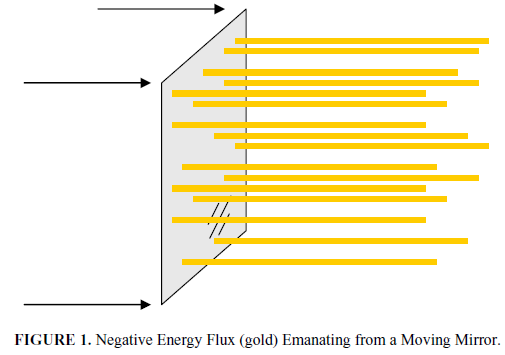 4.Radial Electric/Magnetic Fields: It is beyond the scope to include all the technical configurations by which one can generate radialelectric or magnetic fields. Suffice it to say that ultrahigh-intensity table top lasers have been used to generate extreme electric and magnetic field strengths in the lab. Ultrahigh-intensity lasers use the chirped-pulse amplification (CPA) technique to boost the total output beam power. All laser systems simply repackage energy asa coherent package of optical power, but CPA lasers repackage the laser pulse itself during the amplification process. In typical high-power short-pulse laser systems, it is the peak intensity, not the energy or the fluence,which causes pulse distortion or laser damage. However, the CPA laser dissects a laser pulse according to itsfrequency components, and reorders it into a time-stretched lower-peak-intensity pulse of the same energy. This benign pulse can then be amplified safely to high energy, andthen only afterwards reconstituted as a very short pulse of enormous peak power – a pulse which could never itselfhave passed safely through the laser system (see Figure 2). Made more tractable in this way, the pulse can be amplified to substantial energies (with orders of magnitude greater peak power) without encountering intensity related problems.
4.Radial Electric/Magnetic Fields: It is beyond the scope to include all the technical configurations by which one can generate radialelectric or magnetic fields. Suffice it to say that ultrahigh-intensity table top lasers have been used to generate extreme electric and magnetic field strengths in the lab. Ultrahigh-intensity lasers use the chirped-pulse amplification (CPA) technique to boost the total output beam power. All laser systems simply repackage energy asa coherent package of optical power, but CPA lasers repackage the laser pulse itself during the amplification process. In typical high-power short-pulse laser systems, it is the peak intensity, not the energy or the fluence,which causes pulse distortion or laser damage. However, the CPA laser dissects a laser pulse according to itsfrequency components, and reorders it into a time-stretched lower-peak-intensity pulse of the same energy. This benign pulse can then be amplified safely to high energy, andthen only afterwards reconstituted as a very short pulse of enormous peak power – a pulse which could never itselfhave passed safely through the laser system (see Figure 2). Made more tractable in this way, the pulse can be amplified to substantial energies (with orders of magnitude greater peak power) without encountering intensity related problems.
The extreme output beam power, fields and physical conditions that have been achieved by ultrahigh-intensitytabletop lasers are:
- Power Intensity 10^15 – 10^26 Watts/cm2 (10^30 W/cm2 using SLAC as a booster)
- Peak Power Pulse ≤10^3 femtoseconds
- E-fields ≈10^14 – 10^18 V/m [note: the critical quantum-electrodynamical (vacuum breakdown) field strengthis Ec = 2me^2c^3/he =10^18 V/m; me and e are the electron mass and charge]
- B-fields ≈ several ≈10^6 Tesla [note: the critical quantum-electrodynamical (vacuum breakdown) field strength is Bc = Ec/c =10^10 Tesla]
- Ponderomotive Acceleration of Electrons ≈10^17 – 10^30 g’s (1 g = 9.81 m/sec2)
- Light Pressure ≈10^9 – 10^15 bars
- Plasma Temperatures > 10^10 K
 Ultrahigh-intensity lasers can generate an electric field energy density of ~ 10^16 –10^28 J/m^3 and a magnetic field energy density of ~ 10^19 J/m^3. These energy densities are about the right order ofmagnitude to explore generating kilometer to AU sized wormholes. But that would be difficult to engineer on Earth. However, these energy densities are well above what would be required to explore the generation of micro wormholes in the lab.
Ultrahigh-intensity lasers can generate an electric field energy density of ~ 10^16 –10^28 J/m^3 and a magnetic field energy density of ~ 10^19 J/m^3. These energy densities are about the right order ofmagnitude to explore generating kilometer to AU sized wormholes. But that would be difficult to engineer on Earth. However, these energy densities are well above what would be required to explore the generation of micro wormholes in the lab.
5. Negative Energy from Squeezed Light: Negative energy can be generated by an array of ultrahigh intensity (femtosecond) lasers using an ultrafast rotatingmirror system. In this scheme a laser beam is passed through an optical cavity resonator made of lithium niobate (LiNbO3) crystal that is shaped like a cylinder with rounded silvered ends toreflect light. The resonator will act to produce a secondary lower frequency light beam in which the pattern ofphotons is rearranged into pairs. This is the quantum optical squeezing of light effect that we described previously.Therefore, the squeezed light beam emerging from the resonator will contain pulses of negative energy interspersedwith pulses of positive energy in accordance with the quantum squeezing model.
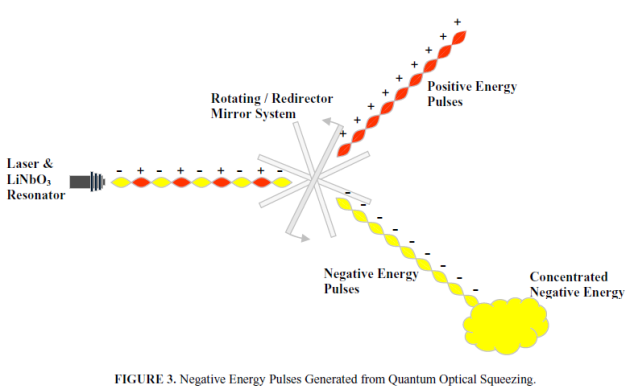 In this example both the negative and positive energy pulses are of ≈10^-15 second duration. We could arrange a setof rapidly rotating mirrors to separate the positive and negative energy pulses from each other. The light beam is tostrike each mirror surface at a very shallow angle while the rotation ensures that the negative energy pulses are reflected at a slightly different angle from the positive energy pulses. A small spatial separation of the two differentenergy pulses will occur at some distance from the rotating mirror. Another system of mirrors will be needed toredirect the negative energy pulses to an isolated location and concentrate them there. The rotating mirror system can actually be implemented via non-mechanical means.
In this example both the negative and positive energy pulses are of ≈10^-15 second duration. We could arrange a setof rapidly rotating mirrors to separate the positive and negative energy pulses from each other. The light beam is tostrike each mirror surface at a very shallow angle while the rotation ensures that the negative energy pulses are reflected at a slightly different angle from the positive energy pulses. A small spatial separation of the two differentenergy pulses will occur at some distance from the rotating mirror. Another system of mirrors will be needed toredirect the negative energy pulses to an isolated location and concentrate them there. The rotating mirror system can actually be implemented via non-mechanical means.
Negative Energy Pulses Generated from Quantum Optical Squeezing. No other way to squeeze light would be to manufacture extremely reliable light pulses containing precisely one, two,or the squeezed (electromagnetic) vacuum state, the energy density is given by: placed within the squeezing cavity, and a laser beam is directed through the gas. The beam is reflected back onitself by a mirror to form a standing wave within the sodium chamber. This wave causes rapid variations in theoptical properties of the sodium thus causing rapid variations in the squeezed light so that we can induce rapid reflections of pulses by careful design.
On another note, when a quantum state is close to a squeezed vacuum state, there will almost always be some negative energy densities present, and the fluctuations in start to become nearly as large as the expectation value itself.
Observing Negative Energy in Lab:
Negative energy should be observable in lab experiments. The negative energy regions in space is predicted to produce a unique signature corresponding to lensing, chromaticity and intensity effects in micro- and macro-lensing events on galactic and extragalactic/cosmological scales. It has been shown that these effects provide a specific signature that allows for discrimination between ordinary (positive mass-energy) and negative mass energy lenses via the spectral analysis of astronomical lensing events. Theoretical modeling of negative energylensing effects has led to intense astronomical searches for naturally occurring traversable wormholes in the universe. Computer model simulations and comparison of their results with recent satellite observations of gamma ray bursts (GRBs) has shown that putative negative energy (i.e., traversable wormhole)lensing events very closely resembles the main features of some GRBs. Current observational data suggests that large amounts of naturally occurring “exotic mass-energy” must have existed sometime between the epoch of galaxy formation and the present in order to (properly) quantitatively account for the“age-of-the-oldest-stars-in-the-galactic halo” problem and the cosmological evolution parameters.
When background light rays strike a negative energy lensing region, they are swept out of the central region thus creating an umbra region of zero intensity. At the edges of the umbra the rays accumulate and create a rainbow-like caustic with enhanced light intensity. The lensing of a negative mass-energy region is not analogous to a diverging lens because in certain circumstances it can produce more light enhancement than does the lensing of an equivalent positive mass-energy region. Real background sources in lensing events can have non-uniform brightness distributions on their surfaces and a dependency of their emission with the observing frequency. These complications can result in chromaticity effects, i.e. in spectral changes induced by differential lensing during the event. The modeling of such effects is quite lengthy, somewhat model dependent, and with recent application only to astronomical lensing events. Suffice it to say that future work is necessary to scale down the predicted lensing parameters and characterize their effects for lab experiments in which the negative energy will not be of astronomical magnitude. Present ultrahigh-speed optics and optical cavities, lasers, photonic crystal (and switching)technology, sensitive nano-sensor technology, and other techniques are very likely capable of detecting the very small magnitude lensing effects expected in lab experiments.
Thus, it can be concluded as fact that negative energy can be generated in lab and will be no more referred as mere ‘fiction’. In a recent work it was suggested that naturally occurring wormholes can be detected since they attract charged particles which in turn, creates magnetic field. Well, I’ll review it and would present a model for realistic Warp Drive’.


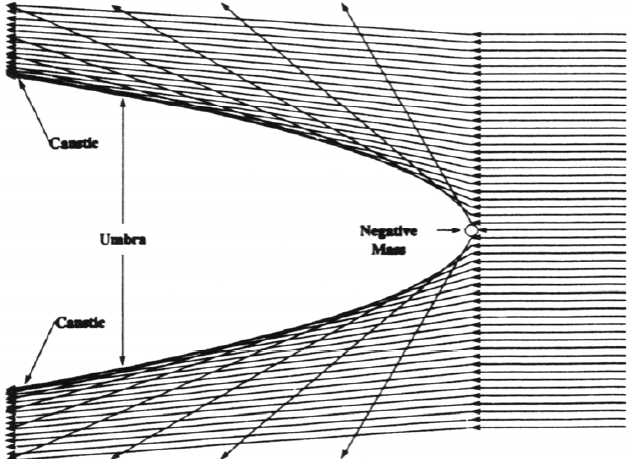
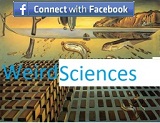
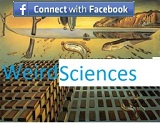





Pingback: Cars Leasing Los Angeles
Excellent article regarding negative energy. I’m an enthusiast of new methods for hyperluminal travels.
Here’s a method for subluminal travel that someday could be improved for hyperluminal.
Pingback: Can the Vacuum Be Engineered for Space Flight Applications? Overview of Theory and Experiments « WeirdSciences
Pingback: Superluminal Light Speed..!! « WeirdSciences
In 1994, Miguel Alcubierre proved theoretically that warp drive,
expanding spacetime behind a spacecraft and contracting spacetime in
front of the spacecraft, do not violate relativity even faster than light.
His original paper stated that it would require impossible amounts of
negative energy, but that problem can be circumvented. Multiple
scientific theories, including string theory, independently predict that
gravity and electromagnetism unify in higher dimensions. Space-time
thus can be manipulated by forcing an electromagnetic field to leave
normal space-time. One idea is to use vacuum energy deficiency
created by the Casimir effect to “suck” an electromagnetic field out of
normal spacetime (graphene is ideal for generating Casimir effect),
another is to place many supraconductors close to
each other, blocking escape through normal space-time so that the
Meisner effect forces the electromagnetic field out of normal space-
time. You should test both possibilities. Of course manipulated space-
time can not only be used for Alcubierre drive but also for cheap, safe,
environmentally friendly spacelaunches. There is a possible problem
that faster than light Alcubierre drive would create an event horizon
which would generate lethal Hawking radiation, but that can be avoided
by having several “warp engines” each contributing a slower than light
effect, but the combined effect is faster than light (continuous warp
metric). A continuous warp metric would have the advantage of creating
no event horizon and thus no Hawking radiation.
While Alcubierres original warp metric was
represented by a single deep “trench” in front of the spacecraft and a
single steep “slope”
behind the spacecraft, a continuous warp metric would be represented
by a low “plain” or a series
of shallow “trenches” in front of the spacecraft and a high “plain” or a
series of moderate “slopes” behind
the spacecraft.
Pingback: Produce negative energy